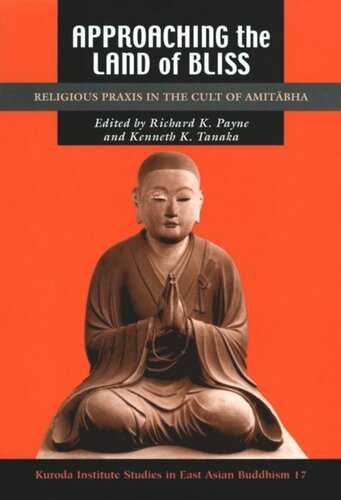

Most ebook files are in PDF format, so you can easily read them using various software such as Foxit Reader or directly on the Google Chrome browser.
Some ebook files are released by publishers in other formats such as .awz, .mobi, .epub, .fb2, etc. You may need to install specific software to read these formats on mobile/PC, such as Calibre.
Please read the tutorial at this link: https://ebookbell.com/faq
We offer FREE conversion to the popular formats you request; however, this may take some time. Therefore, right after payment, please email us, and we will try to provide the service as quickly as possible.
For some exceptional file formats or broken links (if any), please refrain from opening any disputes. Instead, email us first, and we will try to assist within a maximum of 6 hours.
EbookBell Team

5.0
70 reviewsThe discourse of Buddhist studies has traditionally been structured around texts and nations (the transmission of Buddhism from India to China to Japan). And yet, it is doubtful that these categories reflect in any significant way the organizing themes familiar to most Buddhists. It could be argued that cultic practices associated with particular buddhas and bodhisattvas are more representative of the way Buddhists conceive of their relation to tradition. This volume aims to explore this aspect of Buddhism by focusing on one of its most important cults, that of the Buddha Amitâbha. Approaching the Land of Bliss is a rich collection of studies of texts and ritual practices devoted to Amitâbha, ranging from Tibet to Japan and from early medieval times to the present.
The cult of Amitâbha is identified as an integral part of Tibet’s Mahayana Buddhist tradition in the opening essay by Matthew Kapstein. Next Daniel Getz, Jr., locates the Pure Land patriarch Shengchang more firmly in a Huayancontext and his Pure Conduct Society not so much in the propagation of Pure Land praxis but as a means of modifying anti-Buddhist sentiments. Jacqueline Stone’s study of the practice of reciting nenbutsu at the time of death gives us an understanding of both the practice itself and the motivating logic behind it. Kakuban—the founder of the one major "schism" in the history of the Shingon tradition—is placed in a typology of Japanese Pure Land thought inJames Sanford’s study of Kakuban’s Amida hishaku. Hank Glassman contributes an essay on the "subsidiary cult" of Chujohime, whichderived from the cult of Amitâbha but grew to such importance that it displaced the latter as the focus of worship in medieval Japan. In his examination of "radical Amidism," Fabio Rambelli discusses different forms of Japanese Pure Land thought that constitute divergences from the mainstream or normative forms. Richard Jaffeexamines the work of the seventeenth-century cleric Ungo Kiyo, who sought to match his teaching to the needs and capacities of hisdisciples. Todd Lewis highlights the importance of cultic life and finds traces of the desire for rebirth into Sukhavati in stupa worship among Newari Buddhists. Charles Jones’ "thick description" of a one-day recitation retreat in Taiwan provides us with a closer look at how the cult of Amitâbha continues in present-day East Asia.
Approaching the Land of Bliss moves beyond the limitations of defining Buddhism in terms of its textual corpus or nation states,opening up the cult of Amitâbha in Nepal, Tibet, China, and Taiwan, and uncovering new aspects of Japanese Pure Land.
Contributors: Daniel A. Getz, Jr.; Hank Glassman; Richard Jaffe; Charles B. Jones; Matthew T. Kapstein; Todd T. Lewis; Richard K. Payne; Fabio Rambelli; James H. Sanford; Jacqueline I. Stone.